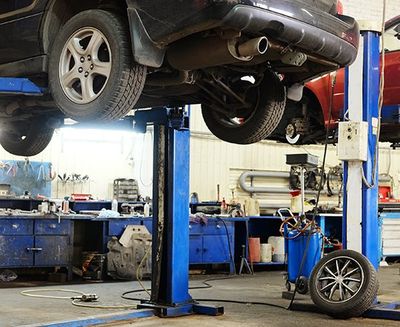Locate Specialist Lift Maintenance Services: Finest Lift Repair Companies Near Me
Locate Specialist Lift Maintenance Services: Finest Lift Repair Companies Near Me
Blog Article
Comprehensive Guide to Lift Solutions and Their Maintenance
Navigating the intricate globe of elevator systems and their maintenance is a job that requires precision and knowledge. From the numerous kinds of lift systems in usage to the precise adherence to safety guidelines, the upkeep of these upright transport tools is a diverse venture. As structures soar higher and technology advances, the need for an extensive understanding of lift systems becomes significantly crucial. Join us as we untangle the complexities of elevator maintenance, exploring typical issues, best techniques, and advanced technologies that shape the modern-day landscape of vertical transportation.
Kinds Of Lift Systems
The most usual types include hydraulic elevators, traction lifts, machine-room-less lifts, and vacuum elevators. Hydraulic lifts are suitable for low-rise structures and use a hydraulic piston to move the lift vehicle. Machine-room-less lifts are a space-saving option as they do not require a separate maker room for the lift machinery.
Each kind of elevator system has its very own benefits and downsides, making it essential for building proprietors and designers to meticulously consider their certain needs before picking one of the most suitable alternative. Elements such as constructing elevation, room availability, energy effectiveness, and spending plan constraints all play a significant function in identifying the very best elevator system for a particular building.
Typical Upkeep Issues
Regular maintenance of elevator systems is vital to guarantee smooth procedure and extend their lifespan. Despite regular maintenance, lift systems can still run into typical upkeep concerns that require to be without delay addressed to stop interruptions in solution. One of one of the most constant problems is door breakdowns. Elevator doors may obtain misaligned, leading to issues with opening and closing correctly. This can create hold-ups and security risks, requiring instant focus from maintenance professionals. An additional typical issue is connected to the elevator's leveling precision. If the lift does not line up properly with the floorings, guests may experience tripping risks and discomfort. Furthermore, problems with the control system, such as sensing unit issues or electric problems, can trigger the elevator to breakdown or quit working completely. Routine assessments and proactive upkeep can aid recognize and deal with these usual maintenance issues prior to they escalate and impact the general efficiency of the elevator system.
Safety And Security Regulations and Compliance
Sticking to rigorous safety and security policies and guaranteeing conformity with industry requirements are vital for keeping the operational stability of lift systems. Lifts undergo a detailed set of security guidelines to safeguard passengers, maintenance workers, and the general public. Regulatory bodies such as the Occupational Safety and Wellness Administration (OSHA) in the USA and the European Lift Organization (ELA) in Europe establish standards that cover different facets of elevator layout, setup, maintenance, and procedure.
Compliance with these laws is not only a lawful demand however additionally an ethical responsibility for building owners and elevator upkeep firms. Failing to fulfill safety criteria can lead to fines, legal liabilities, and, most notably, threaten the safety of people making use of the lift. Regular examinations, maintenance checks, and adherence to safety read here procedures described in the regulations are vital to ensure the effective and secure procedure of elevator systems. By prioritizing security policies and conformity, stakeholders can maintain the count on of the general public and minimize prospective dangers connected with lift use.
Best Practices for Maintenance

Building owners ought to also take into consideration investing in innovation upgrades to enhance the effectiveness and safety of their lift systems. By complying with these best techniques, lift systems can operate efficiently and safely, giving dependable vertical transport for passengers.

Advanced Technologies for Effectiveness
Implementing innovative technologies in elevator systems can considerably enhance operational effectiveness and traveler experience. These systems permit guests to input their wanted floor before entering the elevator, which after that guides them to the most efficient cars and truck.
Furthermore, the combination of clever sensing units and predictive maintenance capabilities has transformed elevator maintenance. These sensors can detect potential concerns before they rise, enabling aggressive maintenance interventions and lessening downtime. Additionally, using regenerative drives and energy-efficient components helps in reducing power consumption and operating expense in lift systems.
Moreover, the execution of cloud-based tracking and remote diagnostics permits real-time tracking of lift performance and prompt troubleshooting of any type of malfunctions. This proactive strategy not just boosts system reliability yet likewise enhances the general user experience by ensuring continuous and smooth lift operations.
Final Thought
Finally, recognizing the different types of lift systems, usual upkeep problems, browse around these guys security policies, best maintenance methods, and advanced technologies for performance is vital for ensuring the smooth operation of elevators. By adhering to safety guidelines and applying ideal practices for maintenance, structure proprietors can extend the life expectancy of their elevator systems and make sure the security of passengers. It is very important to remain upgraded on the most recent improvements in elevator technology to enhance efficiency try this and dependability.
The most common kinds include hydraulic elevators, grip elevators, machine-room-less elevators, and vacuum cleaner elevators. Hydraulic elevators are optimal for low-rise structures and utilize a hydraulic piston to move the lift cars and truck. Machine-room-less elevators are a space-saving alternative as they do not need a separate machine room for the elevator machinery. Routine inspections and aggressive upkeep can aid identify and resolve these usual upkeep problems before they rise and impact the overall efficiency of the elevator system.

Report this page